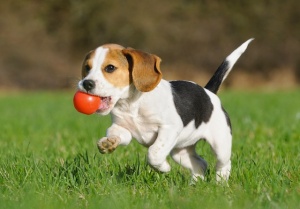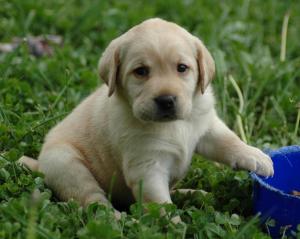Not every dog can sing, dance or play the piano. But, there are some tricks that every dog can (irrespective of their age!) easily learn to perform. Tricks are a great way to offer your pooch the much-needed mental stimulation and entertainment. Not to forget the fun you would have teaching him all those cool acts.
So, here are some must-learn basic tricks for your dog. Do try them out and let us know how your doggie performs 🙂
Stand up
Hold a treat in front of your dog’s nose when he is sitting or lying on the floor. Give the command “stand” and slowly move the treat up and away from his muzzle. Your dog will have to stand up to grab the treat. The moment your pooch stands up, give him his treat, and praise him with a pat on the back or with an encouraging gesture to reinforce the behavior.
Sit down
Teaching your dog to “sit down” is yet another easy trick. While your dog is standing, hold a treat in your hand just above your his nose (not too high else your dog would start jumping to grab it). Shout out your dog’s name followed by the word “sit”. Now, move the treat away from his nose and towards his ears. Your dog should now sit down to grab the treat. Praise him by petting, if he understands your command and sits down to get the treat.
Shake Paws
Greet your pooch everyday by shaking his paw. To teach your dog to “Shake paws” just make him sit in front of you. Then take his paw in your hand and shake it. Keep practicing by extending out your hand, and using the command “Shake”. Praise your dog and reward him with a treat, if he offers his paw for a shake.
Fetch the Ball
Now that your dog can respond to your command to“sit down”, he can graduate to the next level and learn to fetch a ball. Once you get your dog to sit down in one place, throw a ball to a short distance and ask him to fetch it by saying “fetch”. Encourage your dog with treats and praises, if he makes an effort to run after the ball and pick it up. Fetching does not come instinctively to all dogs, so be patient with your pooch and keep practicing this trick, if he doesn’t get it easily.
Catch the Treat
This one’s a fun way to prod your pooch to get up and do some exercise. Just make your dog sit in front of you and toss his favorite treat in the air. Say “catch” when your throw. Make sure you don’t allow your dog to eat the treat, after it hits the ground. Eventually, he will get desperate to get the treat, and make an effort to catch it in the air. Praise your dog and give him a good petting when he catches the treat successfully.
Know any other easy-to-do dog tricks? Do share them with us in the comments.
Image Courtesy: Dogster.com





